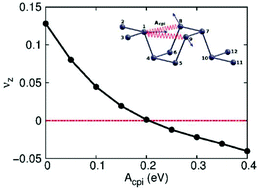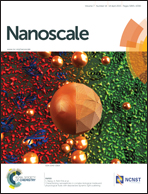A Stillinger–Weber potential for single-layered black phosphorus, and the importance of cross-pucker interactions for a negative Poisson's ratio and edge stress-induced bending
Abstract
The distinguishing structural feature of single-layered black phosphorus is its puckered structure, which leads to many novel physical properties. In this work, we first present a new parameterization of the Stillinger–Weber potential for single-layered black phosphorus. In doing so, we reveal the importance of a cross-pucker interaction term in capturing its unique mechanical properties, such as a negative Poisson's ratio. In particular, we show that the cross-pucker interaction enables the pucker to act as a re-entrant hinge, which expands in the lateral direction when it is stretched in the longitudinal direction. As a consequence, single-layered black phosphorus has a negative Poisson's ratio in the direction perpendicular to the atomic plane. As an additional demonstration of the impact of the cross-pucker interaction, we show that it is also the key factor that enables capturing the edge stress-induced bending of single-layered black phosphorus that has been reported in ab initio calculations.


 Please wait while we load your content...
Please wait while we load your content...